
Image by kjpargeter on Freepik
Data dominance is rapidly increasing, signaling its influence in more industries and processes. Halfway into 2023, it is better to think about what the next 18 months would mean for data management platforms. I firmly believe that starting in 2024, enterprises stand at a critical juncture, realizing the indispensable need to harness data intelligently.
To thrive and flourish, organizations must embrace key data management trends that pave the path towards success. They have to rekindle their strategies and move on from traditional repositories. Traditional data management approaches can’t handle the uncertain volume of data in the era of IoT and AI. New technologies are on the shelf and it’s time to include them in the strategy.
Among many interesting trends, I’m picking my hot favorites that will reincarnate the digital landscape. Tag along!
Data democratization is the practice of making data accessible and consumable for everyone in an enterprise, regardless of technical skills. Off-late, data fabrics and mesh have been hugely popular in embracing everyone in an organization, regardless of their technical expertise—for example, ThoughtSpot, Domino Data Lab, K2view and others.
As we know, a data fabric is a data management architecture that integrates data from multiple sources into a unified view. This makes it easier for users to find and access the necessary data. Likewise, a Mesh gives domain experts more control over their data and can also help improve data quality and governance.
Both architectures are equally instrumental in ensuring data democratization. Apart from improved data access, they make it easier for users to find and access the data as per their requirements. This leads to faster decision-making and insights. There’s also improved data quality by providing a single, unified view. Moreover, the centralized data access control and repository approach ensures improved governance and security.
Industry 4.0, as we know, is the fourth industrial revolution, which largely uses automation, data analytics, and artificial intelligence to create smart factories.
In Industry 4.0, data analytics can improve efficiency, productivity, and quality by identifying areas where processes can be optimized or defects can be prevented.
For example, data analytics track the performance of machines and identify patterns that indicate that a machine is about to fail. It further uses this information to schedule maintenance before the machine fails, which can prevent downtime and lost productivity. Why it matters is because the tech that is largely confined to manufacturing is actually growing at a CAGR of 16.3% from 2023-2030. This could value the industry to USD 377 billion.
By masking sensitive data, enterprises can protect the privacy of their customers and employees, and they can also reduce their risk of data breaches. Masking redacts sensitive data from datasets that are used for analytics and machine learning. This ensures that sensitive data is not used in ways that could violate GDPR, such as profiling or targeting individuals.
Data masking can be used to create pseudonymized datasets. Pseudonymized datasets are those in which personal data has been replaced with artificial identifiers. This makes it more difficult to identify individuals in the datasets, and it can help to protect their privacy. Even though significant data management tools offer masking expertise to a certain extent, I’ll recommend K2View for compliance qualifications as It provides comprehensive features for masking sensitive data, including redaction, tokenization, de-identification, pseudonymization, and data obfuscation. Their data masking solution can help businesses comply with various data privacy regulations, including GDPR, CCPA, and HIPAA. The fabric solution is popular for its micro-database approach that contains a single entity’s data, which has been masked according to the business’s security and compliance requirements.
DataOps streamlines the process of data collection, preparation, analysis, and delivery. This enables enterprises to extract actionable insights more efficiently. Since they deliver faster time to value, enterprises across sectors have begun including them in their data management stack.
DataOps emphasize cross-functional collaboration, automation, version control, and continuous integration and delivery in data operations. By applying these principles, DataOps aims to address common challenges faced by data teams, such as data silos, long development cycles, and lack of agility.
Organizations can ensure that data is consistently validated, cleaned, and transformed by implementing automated data pipelines and standardised processes. This leads to improved accuracy and reliability of insights derived from the data.
Traditional data management approaches often suffer from bottlenecks and data processing and analysis delays. DataOps, emphasizing automation and continuous integration, allows organizations to rapidly iterate and deliver insights to stakeholders, facilitating quicker decision-making and driving business outcomes.
One thing is certain: organizations must prepare themselves for the future data revolution. With data’s relentless growth and importance, businesses that proactively adapt and capitalize on emerging trends will gain a significant competitive advantage. The tech stack currently confined to selective enterprises will be easily accessible to SMEs. On top of it, AI makes it more imperative to act. What do you think?
Yash Mehta is an internationally recognized IoT, M2M and Big Data technology expert. He has written a number of widely acknowledged articles on Data Science, IoT, Business Innovation and Cognitive intelligence. He is the founder of a data insight platform called Expersight. His articles have been featured in the most authoritative publications and awarded as one of the most innovative and influential works in the connected technology industry by the IBM and Cisco IoT departments.
- SEO Powered Content & PR Distribution. Get Amplified Today.
- PlatoData.Network Vertical Generative Ai. Empower Yourself. Access Here.
- PlatoAiStream. Web3 Intelligence. Knowledge Amplified. Access Here.
- PlatoESG. Automotive / EVs, Carbon, CleanTech, Energy, Environment, Solar, Waste Management. Access Here.
- PlatoHealth. Biotech and Clinical Trials Intelligence. Access Here.
- ChartPrime. Elevate your Trading Game with ChartPrime. Access Here.
- BlockOffsets. Modernizing Environmental Offset Ownership. Access Here.
- Source: https://www.kdnuggets.com/2023/08/2024-data-management-crystal-ball-top-4-emerging-trends.html?utm_source=rss&utm_medium=rss&utm_campaign=2024-data-management-crystal-ball-top-4-emerging-trends
- :has
- :is
- :not
- :where
- 16
- 2023
- 2024
- 30
- a
- About
- access
- accessible
- According
- accuracy
- acknowledged
- across
- Act
- actually
- adapt
- address
- ADvantage
- AI
- aims
- allows
- also
- an
- analysis
- analytics
- and
- apart
- Applying
- approach
- approaches
- architecture
- ARE
- areas
- articles
- artificial
- artificial intelligence
- AS
- At
- Automated
- Automation
- awarded
- ball
- BE
- because
- been
- before
- begun
- believe
- Better
- Big
- Big Data
- Billion
- bottlenecks
- breaches
- business
- businesses
- by
- called
- CAN
- capitalize
- CCPA
- centralized
- certain
- challenges
- Cisco
- cognitive
- collaboration
- collection
- Common
- competitive
- compliance
- comply
- comprehensive
- connected
- consistently
- contains
- continuous
- control
- could
- create
- critical
- Crystal
- Currently
- Customers
- cycles
- data
- data access
- Data Analytics
- Data Breaches
- data management
- data privacy
- data processing
- data quality
- data science
- datasets
- Decision Making
- delays
- deliver
- delivery
- democratization
- departments
- Derived
- Development
- difficult
- digital
- do
- domain
- Dominance
- domino
- downtime
- driving
- easier
- easily
- efficiency
- efficiently
- embrace
- embracing
- emerging
- emphasizing
- employees
- enables
- ensure
- ensures
- ensuring
- Enterprise
- enterprises
- entity
- equally
- Era
- Ether (ETH)
- Even
- everyone
- example
- expert
- expertise
- experts
- extent
- extract
- fabric
- fabrics
- faced
- facilitating
- factories
- FAIL
- fails
- faster
- Favorites
- featured
- Features
- Find
- firmly
- flourish
- For
- founder
- Fourth
- fourth industrial revolution
- from
- further
- future
- Gain
- GDPR
- gives
- governance
- Growing
- Growth
- halfway
- handle
- harness
- Have
- he
- help
- his
- HOT
- HTTPS
- i
- I’LL
- IBM
- identifiers
- identify
- identifying
- imperative
- implementing
- importance
- improve
- improved
- in
- include
- Including
- increasing
- indicate
- individuals
- industrial
- Industrial Revolution
- industries
- industry
- industry 4.0
- influence
- Influential
- information
- Innovation
- innovative
- insight
- insights
- instrumental
- Integrates
- integration
- Intelligence
- interesting
- internationally
- into
- iot
- IT
- ITS
- jpg
- KDnuggets
- Key
- Know
- lab
- Lack
- landscape
- largely
- Leads
- learning
- likewise
- Long
- lost
- machine
- machine learning
- Machines
- maintenance
- make
- MAKES
- Making
- management
- Management Tools
- manufacturing
- many
- Matters
- mean
- mesh
- months
- more
- Moreover
- most
- move
- multiple
- must
- my
- necessary
- Need
- New
- New technologies
- next
- number
- of
- offer
- often
- on
- ONE
- Operations
- optimized
- or
- organization
- organizations
- Others
- outcomes
- over
- path
- patterns
- pave
- per
- performance
- personal
- personal data
- platform
- Platforms
- plato
- Plato Data Intelligence
- PlatoData
- Popular
- practice
- preparation
- Prepare
- prevent
- principles
- privacy
- process
- processes
- processing
- productivity
- profiling
- protect
- provides
- providing
- publications
- qualifications
- quality
- quicker
- rapidly
- realizing
- recognized
- recommend
- reduce
- Regardless
- regulations
- relentless
- reliability
- replaced
- repository
- Requirements
- Revolution
- Risk
- s
- schedule
- Science
- Sectors
- security
- selective
- sensitive
- Shelf
- significant
- silos
- since
- single
- skills
- smart
- SMEs
- solution
- Sources
- stack
- stakeholders
- stand
- Starting
- strategies
- Strategy
- success
- such
- TAG
- targeting
- teams
- tech
- Technical
- technical skills
- Technologies
- Technology
- that
- The
- The Future
- their
- Them
- themselves
- These
- they
- thing
- Think
- this
- those
- though?
- Thrive
- time
- to
- Tokenization
- tools
- top
- towards
- track
- traditional
- transformed
- Trends
- Uncertain
- unified
- USD
- used
- users
- uses
- validated
- value
- various
- version
- version control
- View
- volume
- ways
- we
- What
- which
- why
- widely
- will
- with
- works
- would
- written
- you
- zephyrnet


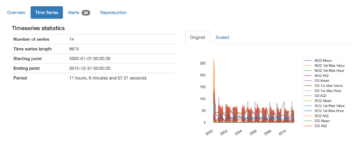
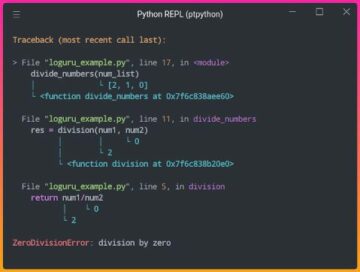
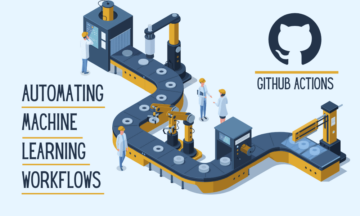
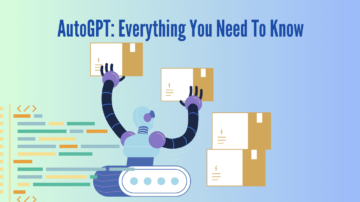

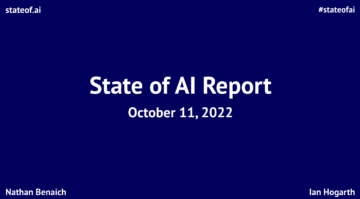


![How To Speed Up SQL Queries Using Indexes [Python Edition] - KDnuggets](https://platoaistream.net/wp-content/uploads/2023/08/how-to-speed-up-sql-queries-using-indexes-python-edition-kdnuggets-360x203.png)